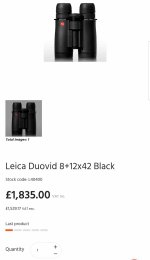Mathematics and binoculars are a very interesting combination. We also need to use logical reasoning here to draw the most logically sound conclusions. It's important to have a broad education, which most people in todays world are lacking. Abraham Lincoln said that specialization is for insects and I cannot disagree with him. Who in their right mind would disagree with the first president of United States of America? As a student of philosophy I can provide some important insight here. My background in mathematics lets me understand how comparing numbers works (a skill not possessed by many nowadays), and by looking at manufacturers specs of almost all e.g. 8x42 binoculars we may notice that they are all basically the same thing. No matter the price point. Ackchyually, some of the cheapest optics have the best specifications. Some people will tell you that they see different things through different binoculars of the same magnification. Don't believe them, they need to educate themselves.
So if I may apply my painstakingly precise logical reasoning skills here, a result of years of sacrifice and study - because mathematics is a language describing and showing objective reality (which subjective observations with flawed human eyes cannot do) and because mathematical numbers describing various parameters of a e.g. 8x42 family of binoculars don't and cannot lie, ergo hundreds of different binoculars by different manufacturers are really the same thing. It could be summarized by ∑∞n=0(−i)n∫dt1dt2⋯dtn=8x42 but I won't go into details here. Don't let propaganda fool you!
75% of light is seventy five percent of light. Mathematics don't lie. People who use their weak eyes and weak minds instead of accepting objective scientific truths cannot be taken seriously. Never forget that.
Shouldn’t you put that in a blue font lest some people think you’re serious.😀😀😀 Good one though.
/s






